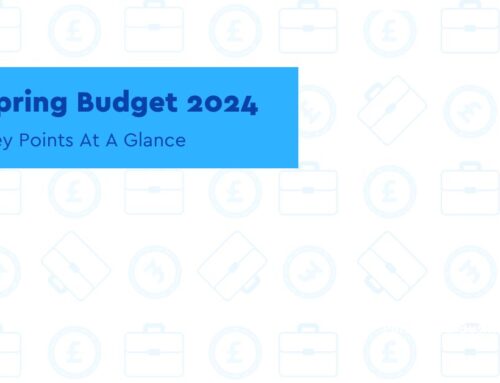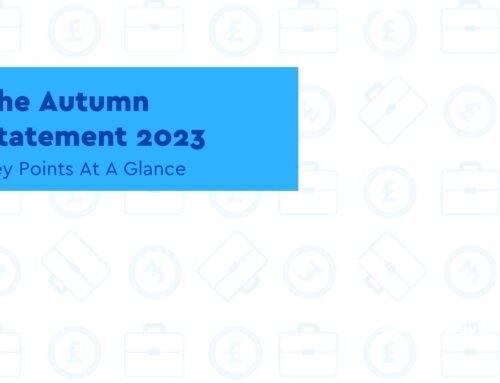HMRC starts contacting taxpayers about the extension of MTD for VAT from April 2022
Key Points
- About a third of VAT registered businesses with taxable turnover below the threshold have already signed up to MTD for VAT voluntarily
- VAT registered businesses with a taxable turnover of more than £85,000 must follow the rules for ‘Making Tax Digital for VAT’ by keeping some records digitally
HMRC has started to write to VAT registered businesses with turnover below £85,000 to alert them to the need to comply with MTD for VAT requirements from April 2022.
Since Making Tax Digital came into force in April 2019, VAT-registered businesses in the UK above the £85,000 registration threshold are required to submit their VAT returns using ‘functional compatible software’ and store their VAT accounting records digitally.
As of 1st April 2022, all VAT-registered businesses will be required to comply with the MTD regime for their VAT accounting. This will affect around 1.1m UK businesses that are registered for VAT with taxable turnover below the current threshold of £85,000.
The first batches of letters are being sent in November and December 2021 to stagger 1 and 2 quarterly filers and those who file monthly or annual VAT returns.
Similar letters will be sent to stagger 3 quarterly filers in February 2022. HMRC is trialling three different versions of the letters to help it assess the success of slightly different approaches which will help it to design future communications campaigns.
Version 1 explains to the business that the way they keep VAT records and submit their VAT returns to HMRC is changing, and that the new way of doing things is called Making Tax Digital. It also says the business can join early if it wants to. Version 2 is shorter and indicates that the VAT system is being modernised, and the business needs to get ready for the change now.
There is then advice on how to join the new service, with links to help and advice on gov.uk.
About a third of VAT registered businesses with taxable turnover below the threshold have already signed up to MTD for VAT voluntarily and should not receive a letter. Some businesses may wish to apply for a digital exclusion exemption; HMRC has indicated that it is now accepting applications from those who require an exemption from April 2022.
MTD for ITSA will start in April 2024 for the self-employed and those with income from property and in April 2025 for most partnerships. MTD corporation tax will not start until April 2026 at the earliest and is likely to be later.
VAT records for Making Tax Digital
VAT registered businesses with a taxable turnover of more than £85,000 must follow the rules for ‘Making Tax Digital for VAT’ by keeping some records digitally, unless:
- Your business uses the VAT GIANT service, for example if you’re a government department or an NHS Trust
- You apply for an exemption
You can choose to sign up to Making Tax Digital for VAT if your business earns less than £85,000.
Records you must keep digitally
You need to keep the following records digitally:
- Your business name, address and VAT registration number
- Any VAT accounting schemes you use
- The VAT on goods and services you supply, for example everything you sell, lease, transfer or hire out (supplies made)
- The VAT on goods and services you receive, for example everything you buy, lease, rent or hire (supplies received)
- Any adjustments you make to a return
- The ‘time of supply’ and ‘value of supply’ (value excluding VAT) for everything you buy and sell
- The rate of VAT charged on goods and services you supply
- Reverse charge transactions – where you record the VAT on both the sale price and the purchase price of goods and services you buy
- Your total daily gross takings if you use a retail scheme
- Items you can reclaim VAT on if you use the Flat Rate Scheme
- Your total sales, and the VAT on those sales, if you trade in gold and use the Gold Accounting Scheme
You also need to keep digital copies of documents that cover multiple transactions made on behalf of your business by:
- Volunteers for charity fundraising
- A third party business
- employees for expenses in petty cash
Will the pensions triple lock be scrapped for good?
Key Points
- The state pension is now due to rise by 3.1% next April, rather than 8%
- MPs rejected the Lords proposal by 300 votes to 229
Proposals made in the House of Lords to retain the state pension triple lock were rejected by the House of Commons last night.
MPs backed the government regarding scrapping the triple lock, the mechanism used to calculate increases to the state pension each year.
The triple lock guarantees the basic state pension rises by whichever is highest out of average earnings, inflation or 2.5%. The government ditched the earnings element of triple lock this year due to earnings distortions created by the pandemic.
The House of Lords amendment to the Social Security (Up-Rating of Benefits) Bill sought to reinstate the triple lock for older people by allowing the government to alter the earnings-linked increase to account for the impact of the pandemic. The Lords argued that an alternative to July’s 8.3% earnings jump could be used. But MPs in the House of Commons voted 300 to 229 to scrap the triple lock this year.
The basic state pension is set to increase by £4.25 a week next year, from £137.60 per week to £141.85 per week, while the flat-rate state pension will rise by £5.55 a week, from £179.60 per week to £185.15 per week.
However, with inflation expected to hit 4% retirees’ spending power could drop over the next 12 months
Tom Selby, head of retirement policy at AJ Bell, said: “The decision to row back on a clear manifesto commitment that hits pensioners in the pocket will not have been taken lightly by the chancellor and the prime minister, so it is no surprise to see the government standing firm in the face of opposition from the House of Lords.
“The fact inflation is expected to run hot over the next 12 months has added fuel to the fire, with next year’s planned 3.1% rise in the state pension likely to feel like a real term cut if prices increase by 4% or more.
“The Lords want the government to retain the earnings element of the triple-lock but explore using an alternative measure that flattens the post-lockdown spike we have seen in 2021. Some have argued this could involve stripping out the impact of Covid on wages or using a smoothed earnings measure rather than the figure for the three months to July, when average earnings jumped by an eye-watering 8.3% as the UK economy opened up.
“However, pensions minister Guy Opperman said last night it would not be possible to produce a reliable alternative earnings measure.”
Becky O’Connor, head of pensions and savings at Interactive Investor, said: “It’s disappointing for pensioners that the Treasury could not find an alternative that would better protect pensioner incomes against inflation than the measure being used this year – September’s inflation rate of 3.1%, as this now looks to be on the low side given sharply rising energy, food and fuel bills. There is a real risk that some pensioners will struggle to stay warm and well fed this winter.
“But the longer-term threat is that the door is now open for the state pension triple lock to be scrapped for good. This is worrying. The government says it will reinstate the triple lock after a year – but a lot can happen in a year and the risk is that the government will renege on this promise.
“For future generations of workers, who might one day depend on the state pension for the bulk of their retirement income, the chipping away of the triple lock is concerning.”
What does COP26 mean for UK SMEs?
Key Points
- A significant number of the UK’s SMEs have pledged to take part in the UN’s Race to Zero campaign
- Switching to renewable energy providers, going paperless, and reassessing how employees commute to the workplace are great first steps a business can make to going net zero
Over half of the UK’s largest businesses have committed to moving to net zero by 2050, represented by 60 of the UK’s FTSE 100 companies, making Britain’s economy the current leader in the world’s transition to lower carbon output.
The UK’s proposed plans include requesting most big firms and institutions present detailed plans to officials and the public by 2023 on how they will hit the climate change targets set at COP26.
A significant number of the UK’s SMEs have pledged to take part in the UN’s Race to Zero campaign in the run up to COP26 but what does the net zero goal really mean for small businesses?
Small to medium-sized businesses account for almost 50% of UK business emissions, standing at the same level as larger corporations that have already begun to make the necessary plans and changes to reduce their impact on the planet. However, SMEs face a very different challenge to big businesses in the journey to net zero.
According to the British Business Bank, while environmental and sustainability awareness amongst small business owners has improved, 35% of small businesses state cost as a barrier for reducing carbon emissions.
Many small businesses are not only restricted by a lack of funds but also by strict tenancy agreements, established business models, and access to critical technology.
For many small business owners, they simply do not have the knowledge, understanding, or money to make the changes to build more sustainable businesses, even if it is a change they are determined to make. Only a small percentage of UK SMEs are even aware of their carbon footprint and or have checked their carbon emissions at all in the last five years.
“Businesses both large and small, across all sectors of the global economy, have a crucial role to play in both reducing their environmental impact and developing the green technologies that will set us on the path to net zero.” Lee Rowley, Business and Industry Minister
It is easy to be overwhelmed by the goals and statements being made at COP26 but there are huge benefits for SMEs to commit to the net zero goal sooner rather than later. Reducing their carbon footprint can help a business cut their costs and save money on their utility bills, travel costs, and on materials that are eventually discarded.
Switching to renewable energy providers, going paperless, and reassessing how employees commute to the workplace are great first steps a business can make to going net zero.
Consumers are also demanding more and more proof that businesses are trying their best to be sustainable and environmentally friendly. It has become a top value for a growing number of customers, especially amongst the millennial and Gen Z generations, that small businesses are dedicated to reducing their impact on the planet.
The reality is that it may soon become a matter of being able to trade or not. As governments and larger industry players become more and more serious about reaching the net zero goal, SMEs might have to prove they are actively working to reduce their carbon footprint, or they risk losing partnerships and contracts with bigger organisations.
We could be looking at a future where gaining or retaining a business license relies on owners being able to prove they are contributing as little as possible to carbon emissions.
Businesses urged to ‘act sooner rather than later’ on RLS applications
Key Points
- The RLS was extended until June 30, 2022, with changes made to the scheme.
- From January, the maximum amount of finance available will be £2m per business
Businesses are being warned to “act sooner rather than later” if they want to access finance rather than relying on the extension to the recovery loan scheme (RLS).
The RLS was set to be closed at the end of this year, but Chancellor Rishi Sunak announced in his Autumn Budget that it will instead run until 30 June 2022, with changes made to the scheme.
Business finance aggregator platform Swoop has urged firms to avoid waiting as they may face extra costs from the next Budget, and warned that the changes to RLS might mean that lenders are more reluctant to lend.
From January 2022, RLS finance available to businesses will drop from up to a maximum of £10m per company to a maximum of £2m, and the government guarantee will be reduced from 80 per cent to 70 per cent of the value of each loan.
“Swoop welcomes the change as many businesses still require government help to return to pre-pandemic levels of turnover, but there are changes to the scheme which will mean that lenders may not be as willing to lend as they once were,” Swoop said.
“Individually these changes might not mean much but together, it could be significantly harder for small – and medium-sized enterprises to win finance in 2022.
“Another reason to act sooner rather than later is that the next Budget may see tax hikes for businesses, putting the squeeze on finances for many.
“If you wait until next year for funding, you may find that you are one among many after the same limited supply of funds.”
Announced Changes
At Autumn Budget 2021, the government announced that the Recovery Loan Scheme will be extended by six months to June 30, 2022.
From January 1, 2022, the following changes will come into force:
- The scheme will only be open to small and medium sized enterprises (turnover <£45m)
- The maximum amount of finance available will be £2 million per business (maximum amount per Group limited to £6m)
- The guarantee coverage that the government will provide to lenders will be reduced to 70%
These changes will apply to all offers made from January 1, 2022.
Different lenders will have different lead times for processing applications, and it may not be the case that applications made before December 31 will be subject to the current terms. Applicants should check with their preferred lender
Types of finance
A lender can provide the finance as one of the following facilities:
- Term loan
- Overdraft
- Invoice finance
- Asset finance
Guarantees
RLS gives the lender a government-backed guarantee against the outstanding balance of the facility. As the borrower, you are always 100% liable for the debt.
If you’re borrowing £250,000 or less
The lender won’t take any form of personal guarantee.
If you’re borrowing more than £250,000
The lender has the discretion to decide whether to take personal guarantees. However:
- Above £250,000, the maximum amount that can be covered under RLS is capped at a maximum of 20% of the outstanding balance of the RLS facility after the proceeds of business assets have been applied
- No personal guarantees can be held over Principal Private Residences
Weekly HMRC, Gov’t and tax updates
Nine in 10 Brits unsure of pension entitlement
Nine in 10 Brits are unsure what pension payments they are entitled to, whilst a further 13 per cent do not realise they are entitled to anything at all, according to research from Money.co.uk.
The survey found that almost a quarter (24 per cent) of savers would struggle to locate and access their pension pots, with a further 18 per cent stating that they have “no idea” where their pension is being saved.
It also looked at how pension contributions vary throughout life, revealing that 16-24 year olds and 25-34 year olds are putting away a higher proportion of their earnings for the future than those aged 35-54.
In particular, it found that 16-24 year olds were making an average pension contribution of 8.1 per cent and 25-34 years olds were contributing 7.2 per cent, whilst 34-44 year olds were making an average contribution of 6.4 per cent.
However, the average contribution rose again amongst those aged 55 and over, increasing to 8.2 per cent.
Savings accounts and stocks and shares investments were the most popular way in which savers were planning to finance their future, with 38 per cent making use of savings accounts and a further 15 per cent investing in stocks and shares.
In addition to this, one in ten savers said that they also plan to, or already to, work a second job to help cover their financial needs in later life.
HMRC warns customers about Self Assessment tricksters
As HMRC prepares to issue emails and SMS to Self Assessment customers, the department is reminding them to be on their guard after nearly 800,000 tax-related scams were reported in the last year.
Fraudsters use Self Assessment to try and steal money or personal information from unsuspecting individuals. In the last year alone, HMRC has received nearly 360,000 bogus tax rebate referrals.
The Self Assessment deadline is January 31, 2022 and customers may expect to hear from HMRC at this time of year. More than 4 million emails and SMS will be issued this week to Self Assessment customers pointing them to guidance and support, prompting them to think about how they intend to pay their tax bill, and to seek support if they are unable to pay in full by January 31.
Bank of England under pressure to raise interest rates after inflation jump
The Bank of England faces growing pressure to raise interest rates after inflation jumped to its highest level in nearly ten years in October.
Sterling rose by as much as 0.5 per cent against the euro to €1.19, a 21-month high, as markets bet that ratesetters would be forced to act as soon as next month to contain the rapid increase in household living costs. Data from the Office for National Statistics showed that the consumer prices index climbed to 4.2 per cent in October, the highest reading since December 2011.
Expectations are now mounting that the Bank’s nine-strong monetary policy committee will raise rates from their record low of 0.1 per cent when it meets on December 16.
Futures markets have fully priced in a rate rise next month and show a roughly two thirds chance of another increase in February, taking the Bank rate to 0.5 per cent.
More than 100,000 young people start Kickstart roles
More than 100,000 young people have started jobs through the government’s Kickstart scheme since its launch last year.
According to the Department for Work and Pensions, an average of 3,400 people have started Kickstart jobs each week over the past month as organisations ramped up their hiring activity to fill vacancies.
The scheme, which offers employers subsidies for providing job placements for 16-24 year olds on universal credit, has recently been extended until March 2022 to give employers the chance to hire more young people.
The government had originally set a target of creating 250,000 Kickstart jobs by the end of 2021.
Get In Touch
At Morgan Reach, we understand every business needs a little help now and again-especially when it comes to the financial side of things. Therefore, to help our clients and visitors we endeavour to cover as much of the business news as possible. If you are self-employed or run a business and need assistance and advice on how these news could make a difference to you or your business, feel free to get in touch with the experts at Morgan Reach. Our business growth experts at Morgan Reach will guide you through what support is available for you or your business as well as the latest news that may affect you.







